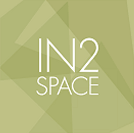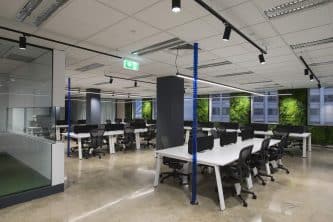
In this article, IN2 SPACE Interior Design and Project Management explore practical tips and strategies for creating a productive workspace that supports your company’s professional goals and enhances the overall well-being of staff.
As office designers with over two decades of experience, we have first hand knowledge of the benefits of applying the principles set out below.
In today’s fast-paced work culture, productivity is a key factor in achieving success. Whether you’re working from home or in a traditional office setting, the design and layout of your workspace play a significant role in your ability to stay happy, focused, motivated, and efficient.
What is an Office Workspace?
An office workspace is a designated area within an office environment where individuals carry out their work-related tasks and responsibilities. It is a physical or virtual space tailored to support productivity, collaboration, and efficiency in the completion of job duties.
Creating a productive workspace that is right for your company will depend on office space size, layout, and interior design. This revolves around factors such as the nature of the work being performed, the organizational culture, and the preferences of the individuals using the space.
Speak with the team at IN2 SPACE Interior Design and Project Management on (03) 9348 1999
Understanding the Elements of a Productive Workspace
These three key elements that contribute to a productive workspace include:
1. Comfort:
A comfortable workspace is essential for maintaining focus and avoiding distractions. This includes ergonomic office furniture, proper lighting, and adequate ventilation.
2. Organization:
An organized workspace promotes efficiency and reduces stress. Consideration for staff storage solutions and systems for managing documents and supplies will keep the office tidy and provide workable processes for staff to follow.
3. Functionality:
An office workspace should be tailored to your staff’s specific needs and work habits. Consider the tasks that are performed regularly and design your layout accordingly, with easy access to tools and resources.
By prioritizing these elements in your workspace design, you can begin to create an office environment that fosters productivity and supports your professional growth.
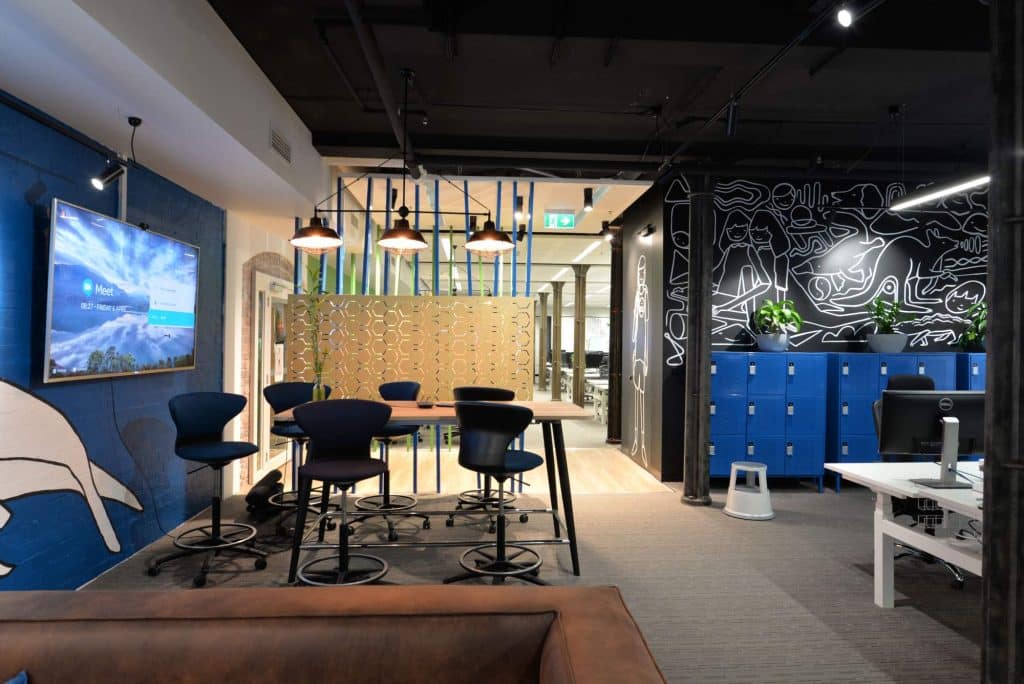
Office Design Strategies for Enhancing Productivity
The essential elements of a productive workspace, are different to design strategies to optimize your environment. When IN2 SPACE Interior Design and Project Management are contracted for an office fitout, we use some of the following principles to create a workspace that encourages productivity and supports the well being of your employees.
4. Office Size:
Choose an office space that caters for your current needs and takes into account your business projections. Make sure there is adequate space so staff can perform their tasks without distractions.
5. Utilize Natural Light:
Natural light has been shown to improve mood and increase productivity. Position your workspace near windows to maximize exposure to natural daylight, and consider using light-colored curtains or blinds to control glare where needed.
6. Incorporate Ergonomic Furniture:
Invest in ergonomic furniture that supports good posture and reduces the risk of discomfort or injury. This should, at minimum include an adjustable chair, a height-adjustable desk, and ergonomic accessories such as a keyboard tray and monitor stand. Ensure there is adequate and appropriate internal lighting through the use of various light fittings.
7. Create Zones for Different Tasks:
Designate specific areas within your workspace for different tasks, such as a quiet corner for focused work, a collaborative area for meetings or brainstorming sessions, and a relaxation zone for breaks.
8. Minimize Distractions:
Identify potential distractions in your workspace, such as noise from outside sources or clutter on desks, and take steps to minimize them. This could involve using noise-canceling headphones, implementing digital tools for task management, or establishing boundaries with colleagues.
By implementing these office design strategies, you can create a workspace that is not only aesthetically pleasing but also optimized for productivity and efficiency.
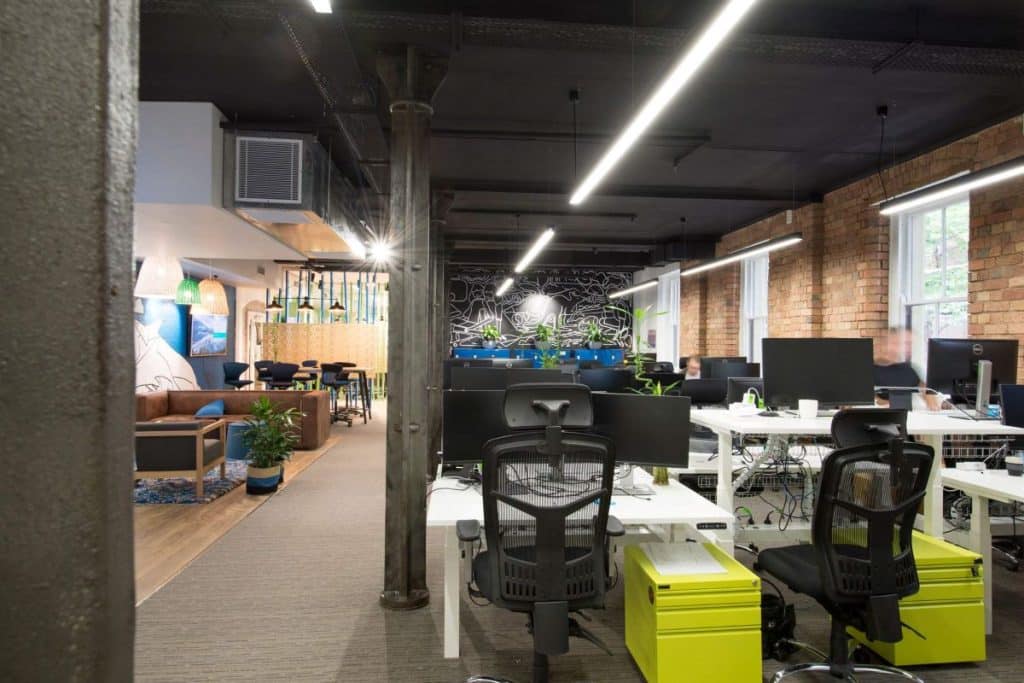
Setting Up Your Workspace for Comfort and Efficiency
In addition to the overall design of your workspace, it’s important to pay attention to ergonomic principles to ensure the comfort and well-being of those working in the office:
9. Optimize Desk Setup:
Position monitors at eye level, with keyboard and mouse within easy reach. Adjust the height of chairs so that feet are flat on the floor and thighs are parallel to the ground.
10. Regular Breaks:
Incorporate regular breaks into the workday helps to to prevent fatigue and improve circulation. Use the 20-20-20 rule as a guideline: every 20 minutes, take a 20-second break and look at something 20 feet away to reduce eye strain.
11. Stay Active:
Combat the negative effects of prolonged sitting by incorporating movement into your work routine. Consider using a standing desk or a desk converter that allows you to alternate between sitting and standing throughout the day, and take short walks or stretch breaks whenever possible. Take advantage of any staff entertainment provided such as pool table, table tennis or areas to relax for a short break.
By following these ergonomic principles, you can create a workspace that promotes comfort, efficiency, and overall well-being.
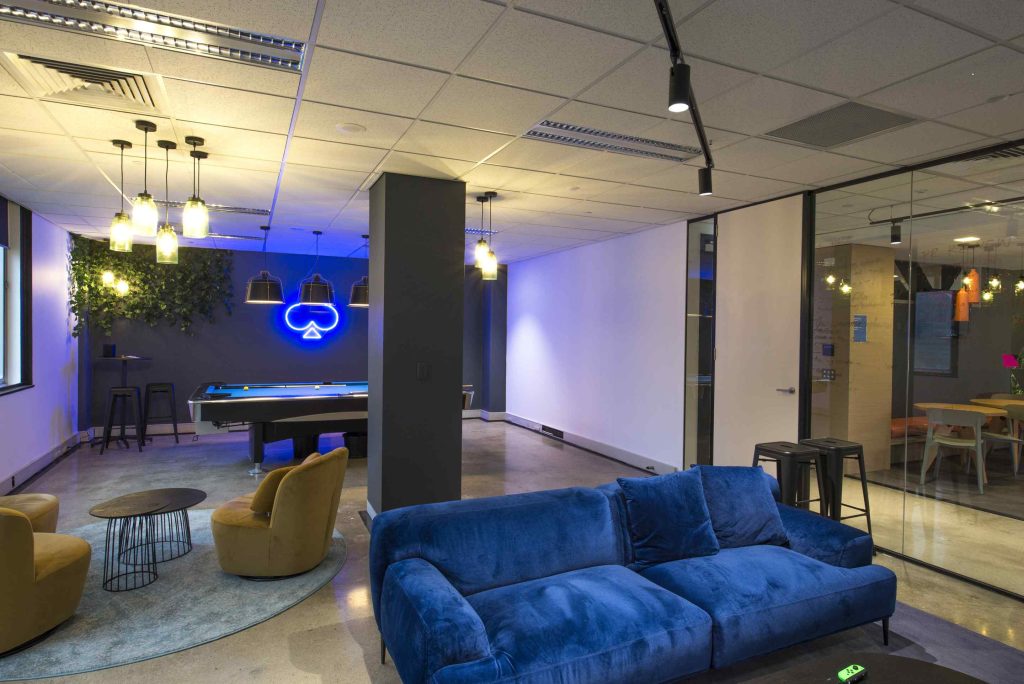
Cultivating a Positive and Organized Work Environment
Finally, maintaining a positive and organized work environment is crucial for sustaining productivity over the long term. Here are some tips to help you stay on track:
12. Declutter Regularly:
Allow staff to take time to declutter the workspace on a regular basis, removing any unnecessary items and organizing supplies for easy access.
13. Establish Routines:
Develop daily routines and rituals that help your staff stay focused and motivated. This could include setting specific work hours, conducting meetings, creating to-do lists, and encouraging staff to prioritize tasks based on importance and deadlines.
14. Stay Connected:
Cultivate a sense of connection and community within your workspace, whether your staff are working remotely or in an office setting. Stay in touch with colleagues, participate in team meetings and social events, and provide an avenue for staff to seek support when needed.
By cultivating a positive and organized work environment, you can create a space that promotes productivity, creativity, and overall satisfaction for your staff. This can transpire also into giving off a positive energy that employees and your valued clients or prospects will pick up on.
Speak with the team at IN2 SPACE Interior Design and Project Management, Melbourne’s leading office designers about designing an office that you will absolutely love.
